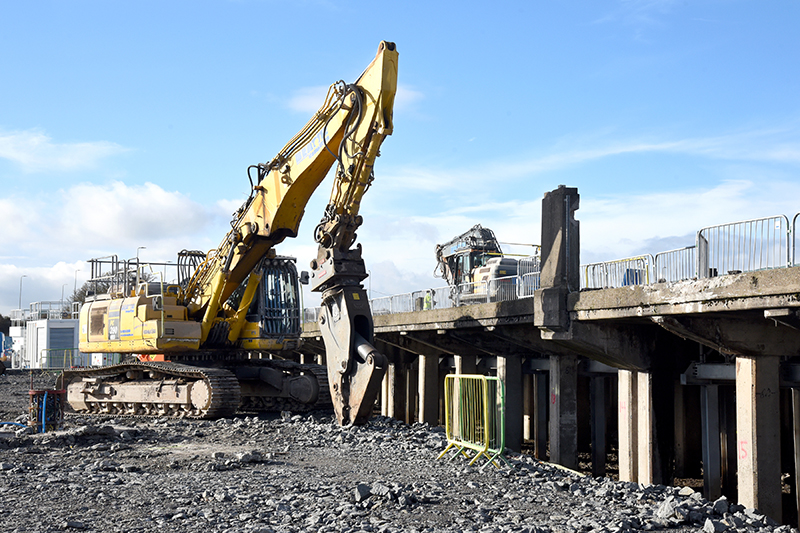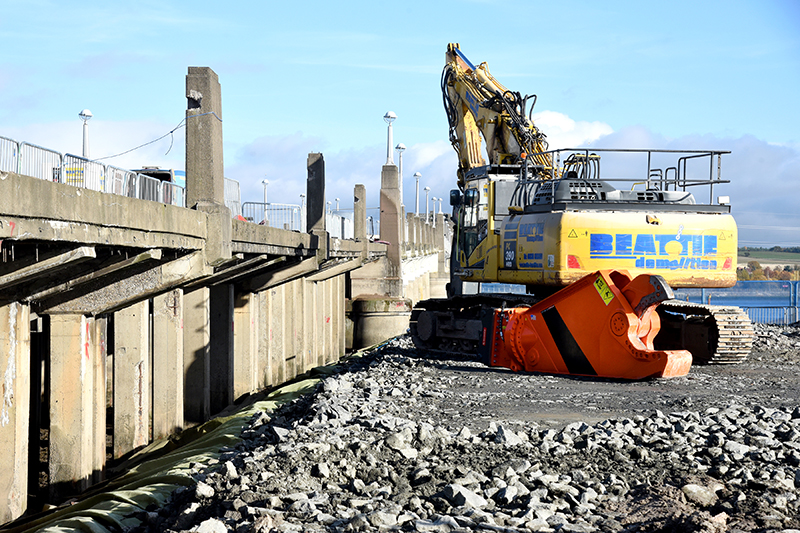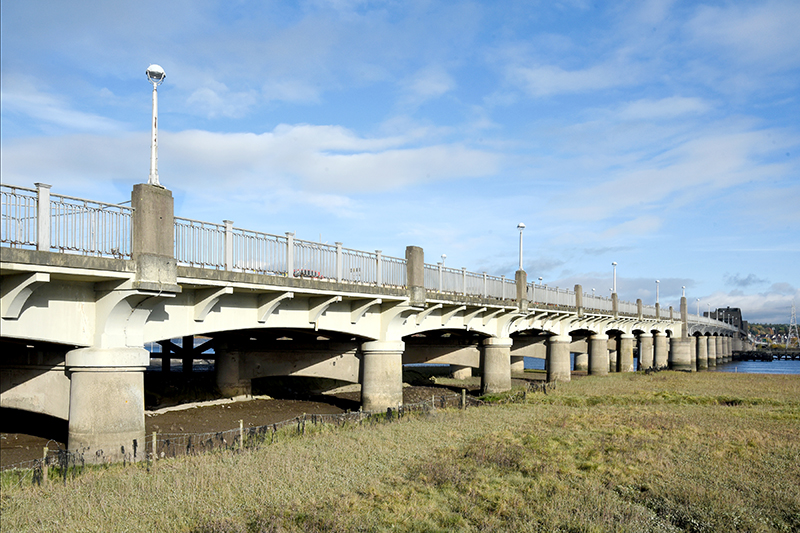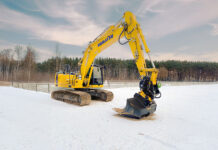‘SUBSTANTIAL’ demolition machines are being put into action at Balfour Beatty’s ongoing work to replace a section of Kincardine Bridge.
The firm is principal contractor on the Transport Scotland project, which is being managed by BEAR Scotland. The work will see the demolition and reconstruction of the A-listed crossing’s southern piled viaduct section.
Demolition works are set to get underway after the project team successfully connected a temporary bridge to the A985 trunk road and alongside the existing 20th century bridge, meaning traffic now transitions from the permanent to temporary bridge when crossing the Firth of Forth.
The demolition will involve the use of two 30 and 50-tonne excavators, including Beattie Demolition’s Komatsu PC390HRD-11 high reach excavator.
“It’s quite substantial pieces of kit to remove the 80-metre section of bridge,” project manager Craig Hunter told Project Plant. “But that’s what we want to see on site – we want to be using the best kit we can to demolish as quickly and safely as we can.”
Mulchers will be attached to the excavators, with the demolition process being controlled and limited to specific areas. Craig explained they will start at one end saw cutting the concrete deck from the pier head before using the mulchers to remove the deck sections, making their way over from north to south.
The temporary bridge will be disconnected from the existing crossing during the demolition, with traffic directed to the west side of the bridge.
“It’s a challenge without a doubt,” Craig added, when asked if it’ll be difficult carrying out demolition works whilst the bridge is in use. “But with the tie ins and the way we’ve created space, it’ll allow us to undertake a controlled demolition.”
The site sits on a natural flood plain and salt marsh, with the project team using over 30,000 tonnes of material to build platforms to work above the Firth of Forth tide. This was no mean feat, given the site is also within a conservation area home to many protected species.
“We brought a lot of experts in who deal with salt marshes and salt marsh regeneration,” Craig added. “We’re now over the winter bird season so we have a lot of things going on about us as a project.”
The salt marsh doesn’t provide a great bearing capacity within the existing ground. The project team undertook extensive inspections to ensure few unknowns have sprung up during the works.
Piles in this area are anticipated to be going down between 25 to 30 metres to find suitable bearing strata, however this was anticipated following the site ground investigation inspections.
“The bored piles will be the ones that give the project the biggest challenges,” Craig explained. “We’re looking at sizeable depths on some of the bored piles and having done the test piles, we’re pretty confident we’ve caught what we can in terms of design verification at this stage.”
A big plus for the team has been the local interest in the works, with both Balfour Beatty and BEAR Scotland liaising throughout with individuals and community groups from the area. “It’s good that people are so interested in the project,” Nick Forbes, major bridges manager at BEAR Scotland, revealed. “People see the investment and know it’s a good investment for their community.”
Craig added that such interest helps to boost site morale. “When people understand what we’re doing there’s a real verification to the efforts we’re putting in. When the weather isn’t great but we’re still trying to hit a key date, we’re not just doing that for our own perspective, but to get to the point we said to the community we’d get to.”













